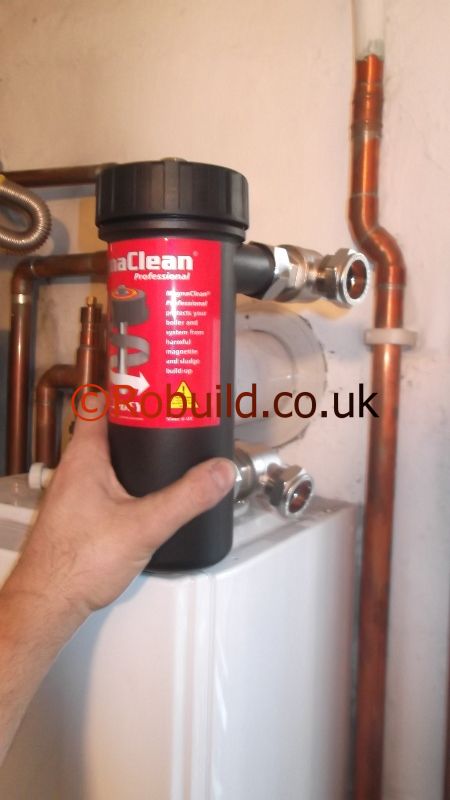
A form of electrolytic corrosion can take place in a central heating system where copper tubing is used in conjunction with pressed steel radiators. Some air – a prerequisite of corrosion – will always be present in the system; it dissolves into the surface of the water in the feed and expansion tank and may also enter through minute leaks too small to permit water to escape. Electrolytic corrosion within a central heating system results in the formation of black iron oxide sludge (magnetite) and hydrogen gas. This leads to impeded water flow and radiators will need continual venting to release airlocks to keep up the required heat level. The iron oxide sludge is drawn towards the magnetic field of the circulating pump and its abrasive qualities contribute towards early pump failure. Also the metal of the radiators, from which the magnetite and hydrogen are produced, becomes thinner until leaks eventually develop in the radiators. Removing airlocks by venting the radiator is a simple process. A key supplied for this purpose is inserted in the radiator when the water is warm and turned anti-clockwise to open the vent valve. Hold a container underneath the key since some water may escape when the valve is opened. Air will come out of the radiator – when it stops doing so and water begins to flow you should tighten the valve. If a radiator in your heating system needs to be continually vented, it is worth testing for internal corrosion while you are carrying out this operation. Apply a lighted taper to the gas escaping from the radiator; hydrogen gas burns with a blue flame and indicates the presence of corrosion.

Protection treatment
A chemical corrosion-proofer can be introduced into the feed and expansion tank to protect the system against corrosion. It is best to do this when the system is first installed, but it can be carried out with an existing system; it will not, however, undo damage already done. Before introducing a corrosion-proofer into an existing system you should get rid of any magnetite sludge with a special solvent. Like the corrosion-proofer, this is introduced into the feed and expansion tank and you should drain the system first. Disconnect the fuel supply to the boiler and switch off the ignition system several hours before draining to give the water time to cool. Tie up the ball float arm of the feed and expansion tank and fit a hose to the draincock near the boiler, running the hose to a drain outside. Undo the draincock empty the system and, when you have closed the draincock, free the ball float arm in the feed and expansion tank. Allow the system to refill, introducing the solvent at the same time. Follow the manufacturer’s instructions for the length of time you should allow for the solvent to complete its work before carrying out treatment with the corrosion-proofer.
